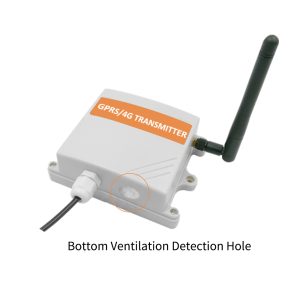Environmental protection is of utmost importance in today's world, as the negative impacts of pollution continue to affect our planet and the well-being of living organisms. One significant aspect of environmental protection is monitoring air quality and detecting harmful gases. Gas sensing systems have emerged as crucial tools in this endeavor, aiding in the identification and mitigation of various types of pollutants. This article explores the role of gas sensing systems in enhancing environmental protection and their potential impact on public health.
Gas Sensing Systems: An Overview
Gas sensing systems are technological solutions designed to identify and measure the concentration of gases present in the environment. They consist of sensors that detect specific gas types, data processing units for analysis, and output displays or communication systems for real-time information dissemination. These systems can be deployed in various settings, such as industrial facilities, residential areas, and vehicles, enabling continuous monitoring and early detection of hazardous gases.
Monitoring Ambient Air Quality
One fundamental application of gas sensing systems is the monitoring of ambient air quality. These systems detect and measure several critical gases, including carbon monoxide (CO), nitrogen dioxide (NO2), sulfur dioxide (SO2), ozone (O3), and particulate matter (PM). By continuously monitoring these pollutants, authorities and environmental agencies can evaluate air quality levels, identify pollution hotspots, and take appropriate measures to mitigate air pollution.
Industrial Emissions Control
Gas sensing systems play a vital role in industrial emissions control by detecting and monitoring harmful gases released during manufacturing processes. Industries, such as chemical plants, power plants, and refineries, release various toxic gases, including volatile organic compounds (VOCs) and greenhouse gases (GHGs). Installing gas sensing systems enables real-time monitoring of emissions, facilitating early identification of leaks or malfunctions, and allowing prompt action to prevent environmental contamination.
Indoor Air Quality Management
Indoor air quality significantly impacts human health and well-being, especially in workplaces, schools, and residential buildings. Gas sensing systems are employed to monitor indoor environments for gases like carbon dioxide (CO2), volatile organic compounds (VOCs), and radon (Rn). By collecting data on these pollutants, building managers can implement effective ventilation strategies, identify potential sources of exposure, and ensure a healthier indoor environment for occupants.
Early Detection of Hazardous Substances
Gas sensing systems also contribute to environmental protection by enabling the early detection of hazardous substances, including chemical spills, gas leaks, and fire outbreaks. Quick identification of such events helps emergency response teams take immediate action, minimizing the potential risks to human health and ecosystems. These systems are widely used in settings where the potential for accidental releases or disasters is high, such as laboratories, hazardous material storage areas, and industrial sites.
Advancements in Gas Sensing Technology
Continuous advancements in gas sensing technology have expanded the capabilities of these systems. Miniaturized sensors, wireless connectivity, and Internet of Things (IoT) integration have enhanced their efficiency and enabled widespread deployment. Additionally, machine learning algorithms and artificial intelligence techniques applied to gas sensing systems have improved accuracy in detecting and identifying various gas types, even at low concentrations.
Conclusion
Gas sensing systems have revolutionized environmental protection efforts by providing accurate and real-time monitoring of gases in the environment. From assessing ambient air quality to controlling industrial emissions, these systems contribute to the preservation of public health and ecosystems. As technology continues to evolve, gas sensing systems will become more accessible, cost-effective, and efficient, enabling broader implementation and greater environmental impact. By leveraging these advancements, we can enhance our collective efforts to protect the environment and create a sustainable future for generations to come.
 : +86 155 8830 2704
: +86 155 8830 2704 : jxdziot@gmail.com
: jxdziot@gmail.com
